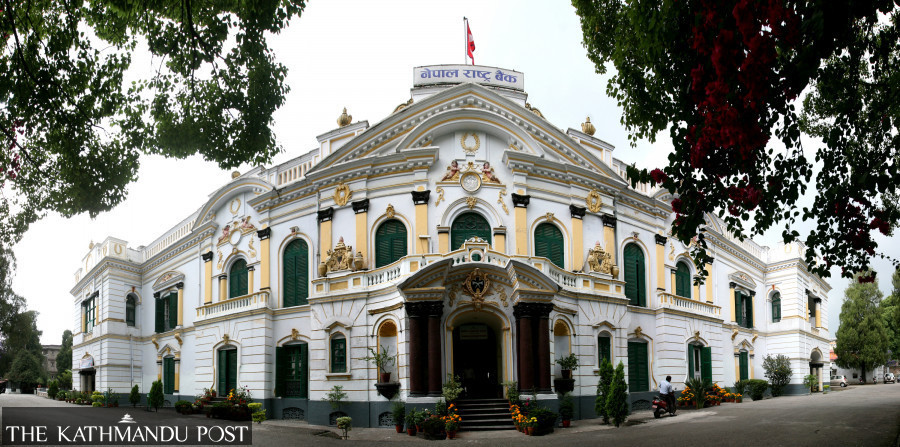National
Central bank says more deposits, less in loan sign of improving liquidity
Despite getting indications of looming foreign exchange depletion as early as April, the central bank waited for the situation to self-improve.
Prithvi Man Shrestha
Officials at the Nepal Rastra Bank claimed that the deposit-credit gap, which resulted in the current shortage of loanable funds at the banks and financial institutions, has moved towards correction.
This, according to them, is reflected in the reverse trend in deposit collection and credit expansion in the third week of December. Banks and financial institutions collected Rs116 billion in deposits until December 21 since the start of the fiscal year 2021-22 in mid-July. During the same period, credit expanded to Rs438 billion.
But, this trend got completely reversed in the week from December 16 to December 21, according to the central bank, as the banks and financial institutions collected Rs27 billion in deposits and extended credit of Rs7 billion.
“Latest data show that the trend of deposit and credit expansion has reversed,” said Prakash Kumar Shrestha, chief of economic research department at the central bank, during an interaction in Kathmandu on Wednesday.
Officials at the central bank said that recent measures taken to control imports and pumping of liquidity in the banking system by the central bank would also help in balancing the deposit-credit growth.
As the country’s economy has been recovering from the disastrous impacts of the Covid-19 pandemic, demands for credit grew for importing goods.
With banks and financial institutions lending excessively to finance imports, it invited a liquidity crunch in the banking system and this crunch was made worse by the government’s failure to make capital spending.
Now, the government and central bank have taken a number of measures to address the situation with the central bank injecting liquidity into the banking system through repo, overnight repo and outright purchases and refinance facility. Also the government has allowed banks and financial institutions to count 80 percent of the funds belonging to local governments as deposits to reduce the credit-to-deposit ratio.
Repo is a monetary instrument under which the central bank procures securities from banks and financial institutions while providing finances to them while overnight repo is a short repo.
The central bank also requires importers to deposit 100 percent cash in banks to open the letter of credit for importing certain goods whose imports the government wants to discourage.
Central bank Governor Maha Prasad Adhikari said these measures were taken as short-term solutions to address the liquidity crunch. “Our preparations are underway for medium-term and long-term strategies to address the recurring liquidity crunch in the banking system,” he said.
While increased financing for imports invited liquidity crunch in the banking system, the country is also suffering from a huge balance of payment deficit and declining foreign exchange reserves.
Balance of payment, which refers to the balance between money going out of the country and the money coming in, slipped into a deficit of Rs150.38 billion as of first four months of the current fiscal year and while gross foreign exchange reserves decreased by 11 percent to Rs1244.85 billion in mid-November from mid-July, according to the central bank.
Current foreign exchange reserves would be sufficient for importing goods and services for 7.2 months, according to the central bank.
But, officials at the central bank said they had noticed indications of depletion in foreign exchange reserves as early as April. But, the central bank didn’t intervene even through the monetary policy for the current fiscal year 2021-22 released in the middle of August, about a month after the fiscal year began.
Experts raised alarm about the state of the economy, saying the currently worsening economic indicators along with potential fertiliser crisis and potential spread of the Omicron variant could cause a disaster in the economy.
However, officials at the central bank maintain that they didn’t intervene so as to help economic activities to flourish after the Covid-19 pandemic and they also paved the way for the economy to self-correct.
“Sometimes the economy self-corrects as a part of a cyclic pattern. But if that does not happen, we have to make policy intervention,” Shrestha said.




 7.12°C Kathmandu
7.12°C Kathmandu















